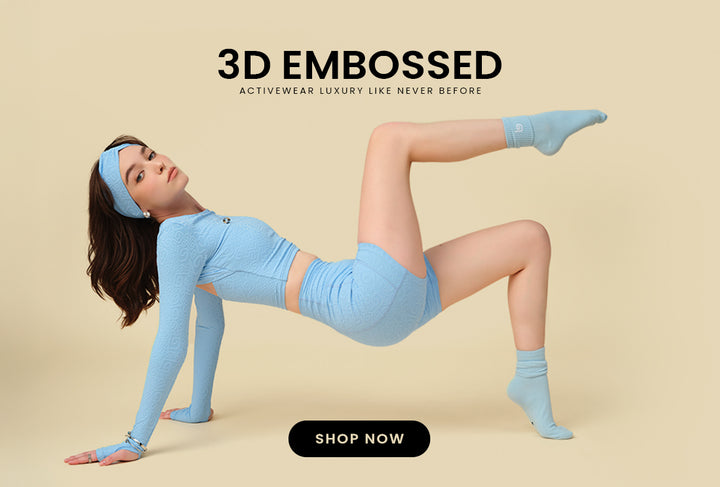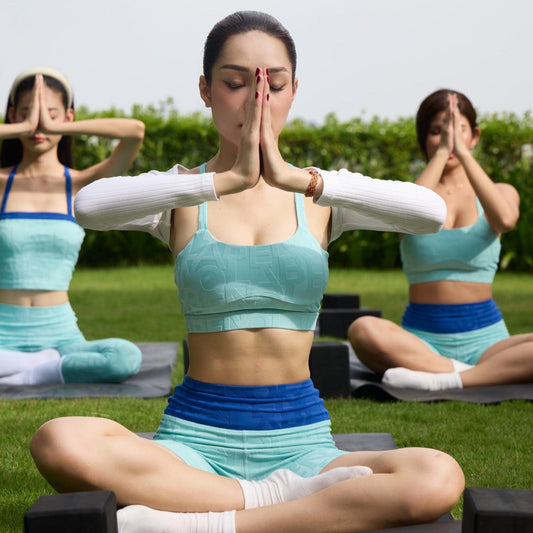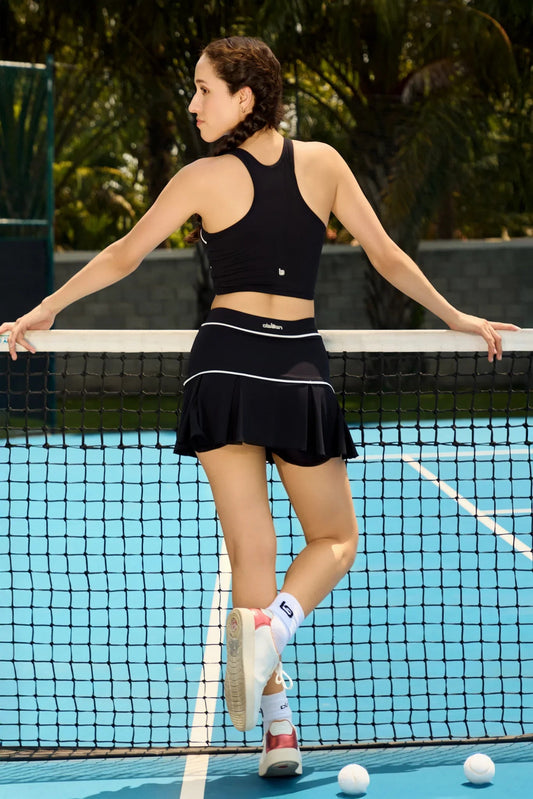In today’s world of health and fitness, trends may change constantly, but there are still practices that prove their lasting value over time. One of them is Pilates. So, what exactly is Pilates that attracts such a wide audience and keeps growing in popularity? Many people think of Pilates as simply an exercise program, but in reality, it is a lifestyle that enhances both physical and mental health.
In this article, Olaben will take you on a journey into the world of Pilates: from its basic concepts and history to the outstanding benefits this method brings.
What is Pilates?
Pilates is a training method that combines body movement with mindful concentration to improve strength, flexibility of the joints, and the surrounding muscle groups. Through this, practitioners not only enhance control over their movements but also deepen focus and muscle awareness with every exercise.
One of the key highlights of Pilates is its focus on building Core strength—the group of muscles located at the body’s center, including the abdominals, hips, and lower back. The core not only supports balance and posture but also serves as the foundation for all daily movements.
What are the fundamental principles of Pilates?
To begin practicing Pilates, you need to master some basic principles:
- Engage your Core: always maintain control through your core muscles.
- Absolute focus: concentrate on each movement to achieve maximum results.
- Proper breathing: inhale through the nose, exhale through the mouth.
- Controlled movement: combine breathing rhythm with precise technique in every exercise.
Depending on the routine, you can practice Pilates on specialized equipment or simply perform basic Pilates exercises on a mat.

The Origins of Pilates
Pilates was created by Joseph Pilates in the early 1920s. At first, it was designed as a rehabilitation method for dancers. With their intense training schedules—often 6 days a week, for several hours a day—dancers were highly prone to injuries caused by repetitive movements targeting the same muscle groups.
Pilates emerged as a way to rebalance the body, helping overworked muscles relax and recover while strengthening and improving flexibility.
Today, Pilates has gone far beyond the world of dancers to become a favorite of many celebrities and public figures. Beyond sculpting a toned physique, Pilates also helps shape elegant, well-defined curves that are both soft and captivating.
How many types of Pilates are there?
Today, Pilates is generally divided into two main forms:
- Mat Pilates: A simple and accessible way to practice, suitable for both beginners and experienced practitioners.
- Equipment-based Pilates: Uses specially designed apparatus to provide support and increase the challenge of each exercise.
Pilates equipment also comes in a variety of sizes. In professional studios, you may find larger machines such as the Cadillac or the Reformer. For smaller spaces or home workouts, practitioners can opt for compact tools like dumbbells, resistance bands, stability balls, foam rollers, Pilates rings, tennis balls, or therapy balls.
Read more: What is Wall Pilates? 8 Effective Wall Pilates Exercises

What are the benefits of Pilates?
Besides promoting a healthier body and improving posture, what are the benefits of Pilates? This practice offers much more than you think: boosting energy, supporting weight management, and most importantly, being highly adaptable to personal needs. Whether you are a beginner or at an advanced level, Pilates helps you achieve a toned, flexible, and graceful physique.
Some of the key benefits of Pilates include:
- Better, deeper sleep.
- Enhanced body awareness and control.
- Developing both muscular strength and flexibility, along with mental resilience.
- Making everyday movements easier and more effective.
- Improved posture, bringing greater confidence and a positive mindset.
- Stress relief, easing menstrual pain, and improving sexual well-being.
- Increased range of motion after injury recovery, with excellent support for many other sports.
A study published on ResearchGate also revealed that Pilates is highly effective in reducing chronic lower back pain while preventing injuries and supporting functional recovery.

Why do so many female celebrities love Pilates?
It’s no coincidence that stars like Minh Hằng, Thùy Tiên, Jennie (Blackpink), IU… are devoted to Pilates. This discipline not only tones the body but also creates soft, feminine curves that radiate confidence and allure.
Read more: Compare Pilates vs. Yoga — Which practice is right for you?
Who can practice Pilates?
So, who is Pilates for? In fact, Pilates is designed for everyone, from complete beginners to regular fitness enthusiasts.
- Beginners should start with foundation classes to learn proper techniques and avoid injuries.
- Older women, pregnant women, or those with musculoskeletal issues should consult a specialist before practicing.
- At any level, working with an instructor remains the safest and most effective approach.

What should you keep in mind when practicing Pilates?
- Beginners can absolutely practice at home through online videos, but it’s best to join a few classes to master the techniques.
- Wear fitted, comfortable clothing that allows for smooth movements—yoga wear, crop tops, or sleeveless sports tops are all ideal.
- Breathing plays a core role. Just like yoga, Pilates connects each movement with your breath. Deep diaphragmatic breathing helps you better engage your core and execute movements more effectively.

Frequently Asked Questions about Pilates
Which muscles does Pilates target?
Pilates emphasizes the core muscles—including the abdominals, hips, spine, and pelvis. It also strengthens the legs, thighs, and glutes, making it highly beneficial for people with lower back pain or arthritis.
Does Pilates help with weight loss?
Yes, but indirectly. Pilates tones, sculpts, and improves body shape, though it is not a high-calorie-burning workout. For effective weight loss, it should be combined with a healthy diet and cardio exercises such as walking, swimming, or cycling.
What’s the difference between Yoga and Pilates?
Both emphasize the connection between body and mind. However, yoga focuses more on spirituality and meditation, while Pilates emphasizes physical conditioning, core strength, and posture improvement.
Who should avoid Pilates?
Those with unstable blood pressure, severe osteoporosis, risk of blood clots, or undergoing treatment for herniated discs should consult their doctor before practicing.

Explore the world of Pilates with Olaben
To make your Pilates journey more effective and fulfilling, choosing the right outfits and accessories plays a key role. As a premium activewear brand, Olaben offers everything you need—from leggings, sports bras, crop tops, tank tops, long sleeves, jackets to hoodies.
Beyond clothing, Olaben also provides a wide range of Pilates workout essentials such as yoga mats, balls and fitness accessories, water bottles, gym bags, and sports socks. These companions help you move with confidence and maintain an active lifestyle every day.
If you enjoy other sports besides Pilates, Olaben also offers exclusive collections for yoga, tennis, pickleball, golf, and running. Whatever your activity, Olaben is ready to accompany you in achieving your goals while keeping your style on point.
Visit Olaben Store for an In-Person Experience
Try out the latest designs and receive dedicated advice from the Olaben team at our showrooms:
Ho Chi Minh City
- Flagship Store: 1M, Street 10, Thao Dien, District 2 (Thu Duc) – Hotline: 092.828.2088
- Nguyen Trai: 35 Nguyen Trai, Ben Thanh, District 1 – Hotline: 036.428.2088
Hanoi
- Vincom Times City: 458 Minh Khai, Vinh Phu, Hai Ba Trung – Hotline: 037.928.2088
- 263 Pho Hue, Hai Ba Trung








